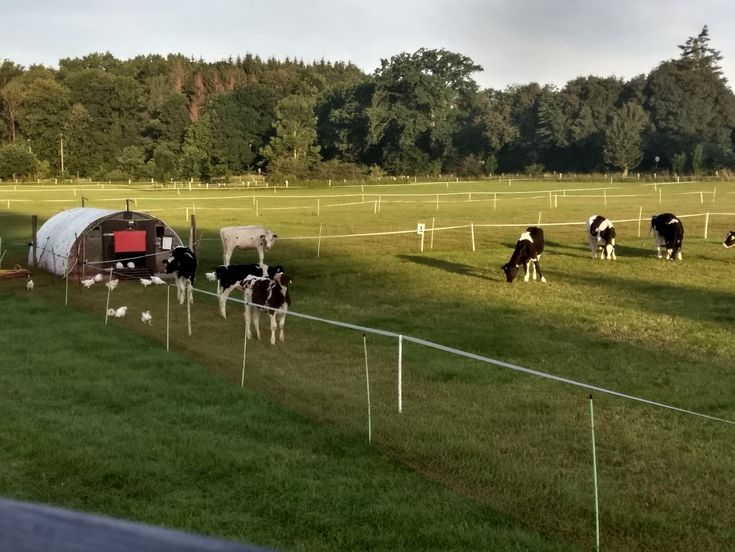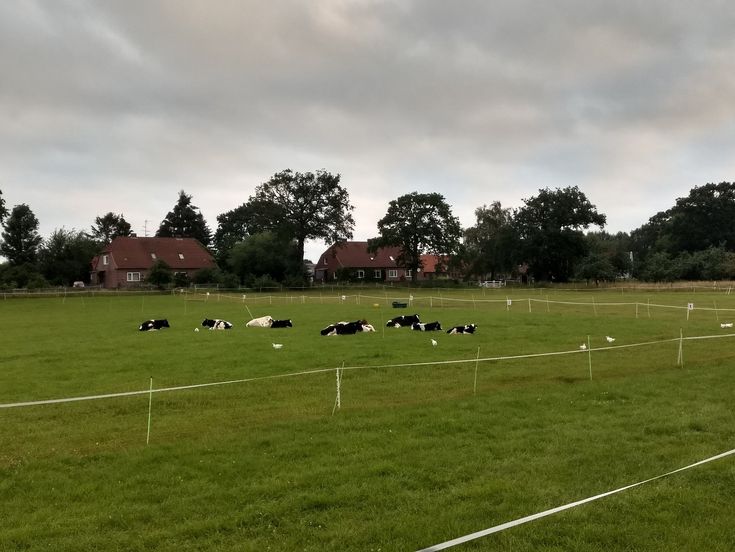Animals in organic mixed livestock systems – farmer’s perception and impact on animal behaviour, health and welfare
SUPERVISOR: Christoph WINCKLER
PROJECT ASSIGNED TO: Lisa SCHANZ
It is often argued that specialisation and the sustained use of land in agricultural systems has led to varying difficulties regarding the environmental impact, for example the high demands on soil (Green et al., 2005; Matson et al., 1998). In recent years a more diversified farming strategy has been mentioned as a possibility to preserve and efficiently use natural resources (Kremen et al., 2012; Kremen and Miles, 2012), as well as increase the resilience in the face of adverse events (e.g. market price drop for one product or severe weather events) (Lemaire et al., 2014; Nozières et al., 2011). There is some evidence that a farm may benefit from being home to more than one livestock species in various ways: For one the different types of excreta may be used to provide the soil with a richer fertiliser, while the different demands on grazing (e.g. grass species) may lead to an improved use of the pastures, if two animal species get access to a pasture, either alternatingly or jointly (Anderson et al., 2012; Esmail, 1991; Fraser et al., 2014). Apart from possible health benefits or risks (parasitic pressure), other animal welfare aspects have not yet received a great deal of research attention in mixed livestock systems. Therefore, one aim of this research project is to investigate the inter-species behaviour of two jointly grazed livestock species, by describing interactions in detail and comparing a wider range of behaviours in jointly and separately grazed cattle and broilers.
The farmers attitude and perception of animal welfare and several other aspects of farming influence how farmers handle decision-making, change and adaptation, considerably (Bay-Larsen et al., 2018; e.g. Edwards-Jones, 2006; Huber et al., 2015; Nettier et al., 2012). Thus, another aim of this project is to provide an insight into the reasons for mixed livestock farming and the possible impacts on the farm, the animals and their welfare by conducting an in-depth interview with farmers (e.g. Bay-Larsen et al., 2018), or a combination of quantitative and qualitative interview methods (e.g. Boogaard et al., 2006; Kiliç and Bozkurt, 2013).
This PhD project is part of the ERAnet CORE Organic project MIX-ENABLE (MIXEd livestock farming for improved sustaiNABiLity and robustnEss of organic livestock). For further information please visit this website (http://projects.au.dk/coreorganiccofund/research-projects/mix-enable/).


Figure 1 and 2: Joint grazing of cattle and broilers on pasture.
References
Anderson, D.M., Fredrickson, E.L., Estell, R.E., 2012. Managing livestock using animal behavior: Mixed-species stocking and flerds. Animal. doi.org/10.1017/S175173111200016X
Bay-Larsen, I., Risvoll, C., Vestrum, I., Bjørkhaug, H., 2018. Local protein sources in animal feed - Perceptions among arctic sheep farmers. J. Rural Stud. 59, 98–110. doi.org/10.1016/j.jrurstud.2018.02.004
Boogaard, B.K., Oosting, S.J., Bock, B.B., 2006. Elements of societal perception of farm animal welfare: A quantitative study in The Netherlands. Livest. Sci. 104, 13–22. doi.org/10.1016/j.livsci.2006.02.010
Edwards-Jones, G., 2006. Modelling farmer decision-making: concepts, progress and challenges. Anim. Sci. 82, 783–790.
Esmail, S.H.M., 1991. Multispecies grazing by cattle and sheep. Rangeland.
Fraser, M.D., Moorby, J.M., Vale, J.E., Evans, D.M., 2014. Mixed grazing systems benefit both upland biodiversity and livestock production. PLoS One. doi.org/10.1371/journal.pone.0089054
Green, R.E., Cornell, S.J., Scharlemann, J.P.W., Balmford, A., 2005. Farming and the Fate of Wild Nature. Science (80-. ). 307, 550–555. doi.org/10.1126/science.1106049
Huber, R., Flury, C., Finger, R., 2015. Factors affecting farm growth intentions of family farms in mountain regions: Empirical evidence for Central Switzerland. Land use policy 47, 188–197. doi.org/10.1016/j.landusepol.2015.04.006
Kiliç, I., Bozkurt, Z., 2013. The relationship between farmers’ perceptions and animal welfare standards in sheep farms. Asian-Australasian J. Anim. Sci. 26, 1329–1338. doi.org/10.5713/ajas.2013.13124
Kremen, C., Iles, A., Bacon, C., 2012. Diversified farming systems: An agroecological, systems-based alternative to modern industrial agriculture. Ecol. Soc. doi.org/10.5751/ES-05103-170444
Kremen, C., Miles, A., 2012. Ecosystem Services in Biologically Diversified versus Conventional Farming Systems. Ecol. Soc. 17. doi.org/10.5751/ES-05035-170440
Lemaire, G., Franzluebbers, A., Carvalho, P.C. de F., Dedieu, B., 2014. Integrated crop-livestock systems: Strategies to achieve synergy between agricultural production and environmental quality. Agric. Ecosyst. Environ. 190, 4–8. doi.org/10.1016/j.agee.2013.08.009
Matson, P.A., Naylor, R., Ortiz-Monasterio, I., 1998. Integration of Environmental, Agronomic, and Economic Aspects of Fertilizer Management. Science (80-. ). 280, 112–114.
Nettier, B.., Dufour, S., Chabrat, S., Madelrieux, S., 2012. Conversion to organic farming and consequences on work organisation and work perception. 10th Eur. IFSA Symosium 1–9.
Nozières, M.O., Moulin, C.H., Dedieu, B., 2011. The herd, a source of flexibility for livestock farming systems faced with uncertainties? animal 5, 1442–1457. doi.org/10.1017/S1751731111000486
